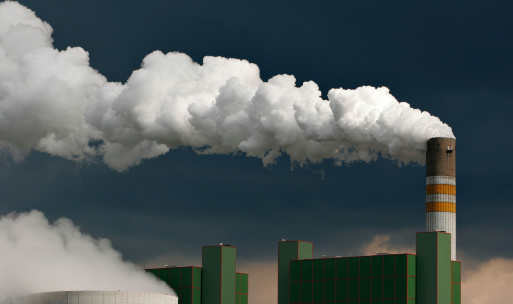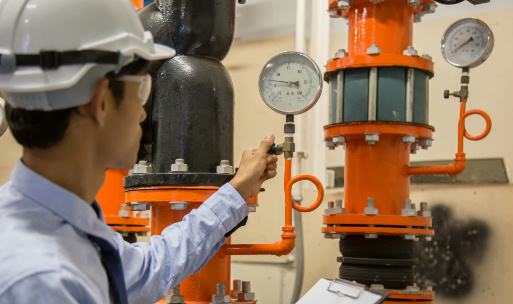Methane and the Environment: A Comprehensive Guide
Methane (CH4) is a potent greenhouse gas with significant implications for the environment. Understanding methane's sources, impacts, and mitigation strategies is crucial for addressing climate change and ensuring environmental sustainability. This guide provides a comprehensive overview of methane and its environmental effects, as well as strategies to mitigate its impact.
What is Methane?
Methane is a colorless, odorless gas that is the primary component of natural gas. It is produced both naturally and through human activities. Despite its relatively short atmospheric lifetime of about 12 years, methane is over 25 times more effective than carbon dioxide (CO₂) at trapping heat in the atmosphere over a 100-year period.
Sources of Methane
Natural Sources
- Wetlands: Wetlands are the largest natural source of methane, produced through the anaerobic decomposition of organic material.
- Termites: Termites produce methane during digestion, contributing to natural methane emissions.
- Oceans: Methane is released from oceanic sources, including gas hydrates and biological activity.
Anthropogenic Sources
- Agriculture: Livestock digestion (enteric fermentation) and manure management are significant sources of methane emissions.
- Fossil Fuel Extraction and Use: Activities like oil drilling, natural gas extraction, and coal mining release methane into the atmosphere.
- Landfills: Decomposition of organic waste in landfills produces methane.
- Biomass Burning: Burning organic material, such as in forest fires and agricultural practices, releases methane.
Environmental Impact of Methane
Climate Change
Methane is a powerful greenhouse gas, contributing significantly to global warming. Its high global warming potential means that even small concentrations can have a large impact on climate change.
Air Quality
Methane contributes to the formation of ground-level ozone (smog), which can cause respiratory problems and other health issues.
Ecosystem Effects
Methane emissions from permafrost and other sources can alter ecosystems, affecting plant and animal life. Changes in methane levels can also impact water quality and soil composition.
Why Do Methane Emissions Pose a Risk to The Environment?
Methane emissions pose a significant risk to the environment due to their high global warming potential, contribution to climate change, impact on air quality, and effects on ecosystems. Addressing methane emissions through comprehensive mitigation strategies is essential for protecting the environment, improving public health, and ensuring sustainable development. Reducing methane emissions can have an immediate and positive impact on slowing climate change, making it a critical area of focus for environmental protection efforts.
1. Potent Greenhouse Gas
High Global Warming Potential
Methane (CH4) is a potent greenhouse gas. It has a much higher global warming potential (GWP) than carbon dioxide (CO₂). Over a 100-year period, methane is over 25 times more effective at trapping heat in the atmosphere compared to CO2. This means that even relatively small amounts of methane can have a disproportionately large impact on global warming and climate change.
Short Atmospheric Lifetime
Although methane has a shorter atmospheric lifetime (approximately 12 years) compared to CO₂, its ability to trap heat during this period is significantly higher. This makes methane a crucial target for short-term climate mitigation efforts, as reducing methane emissions can have a more immediate effect on slowing climate change.
2. Contribution to Climate Change
Accelerated Warming
Methane emissions contribute to the greenhouse effect, leading to increased global temperatures. This accelerated warming can result in more extreme weather events, melting polar ice, rising sea levels, and other climate-related impacts.
Feedback Loops
Methane emissions can create feedback loops that exacerbate climate change. For example, warming temperatures can lead to the thawing of permafrost, which releases more methane trapped in frozen organic matter. This additional methane release further accelerates warming, creating a self-reinforcing cycle.
3. Impact on Air Quality
Ground-Level Ozone Formation
Methane is a precursor to ground-level ozone (O₃) formation. When methane is released into the atmosphere, it reacts with other pollutants in the presence of sunlight to form ozone. Ground-level ozone is a harmful air pollutant that can cause respiratory problems, cardiovascular issues, and other health problems.
4. Environmental and Ecosystem Effects
Altered Ecosystems
Methane emissions can impact ecosystems by changing the atmospheric and soil composition. Increased methane levels can alter the growth patterns of plants, the behavior of animals, and the overall health of ecosystems. In aquatic environments, methane can contribute to hypoxia (low oxygen levels), negatively affecting marine life.
Water Quality
Methane can dissolve in water bodies, affecting water quality and the organisms that rely on these ecosystems. High methane concentrations in water can be harmful to fish and other aquatic life.
5. Economic and Social Impacts
Agricultural Productivity
Climate change driven by methane emissions can affect agricultural productivity. Changes in temperature and precipitation patterns can impact crop yields, water availability, and the livelihood of farmers and communities dependent on agriculture.
Infrastructure and Property Damage
Increased frequency and severity of extreme weather events, such as hurricanes, floods, and droughts, can cause significant damage to infrastructure and property. This results in economic losses and increased costs for disaster recovery and adaptation measures.
Mitigation Strategies
Reducing Methane Emissions
- Improved Agricultural Practices: Implementing better manure management and dietary adjustments for livestock can reduce methane emissions from agriculture.
- Capturing Methane from Landfills: Landfill gas recovery systems can capture methane for use as an energy source.
- Enhancing Fossil Fuel Practices: Improving the efficiency of natural gas extraction, transportation, and usage can minimize methane leaks.
Technological Innovations
Methane Sensors
Advanced sensors can detect and monitor methane emissions, allowing for quicker responses to leaks and better management of methane sources.

MH-T4041A Low Power Consumption Infrared Gas Sensor
- Hydrocarbon flammable gases
- 0~10% Vol optional(refer to sheet 2)
- Read More

MPn-4C CH4 Methane Flammable Gas Sensor
- CH4, Methane, Natural gas, marsh gas
- 300~10000ppm (methane, natural gas)
- Read More

MC119 Catalytic Flammable Gas Sensor
- hydrogen, acetylene, gasoline, VOC such as alcohol, ketone, benzene.
- 0-100%LEL Anti-explosion Mark:ExdibⅠ
- Read More
Biogas Recovery
Utilizing biogas recovery systems in agricultural and waste management practices can convert methane into a usable energy source, reducing emissions.
Policy and Regulation
- Regulatory Measures: Governments can implement regulations to limit methane emissions from key sources such as agriculture, landfills, and fossil fuel industries.
- Incentives for Innovation: Providing incentives for the development and adoption of methane-reducing technologies can accelerate progress in mitigating methane emissions.
Global Methane Pledge
The Global Methane Pledge was launched at COP26 in November 2021 to catalyse action to reduce methane emissions. Led by the United States and the European Union, the Pledge now has 111 country participants who together are responsible for 45% of global human-caused methane emissions. By joining the Pledge, countries commit to work together in order to collectively reduce methane emissions by at least 30% below 2020 levels by 2030.
Conclusion
Methane is a significant greenhouse gas with considerable effects on climate change, air quality, and ecosystems. Understanding its sources, impacts, and mitigation strategies is essential for addressing its environmental impact. Through improved agricultural practices, technological innovations, and effective policy measures, we can reduce methane emissions and work towards a more sustainable future.








